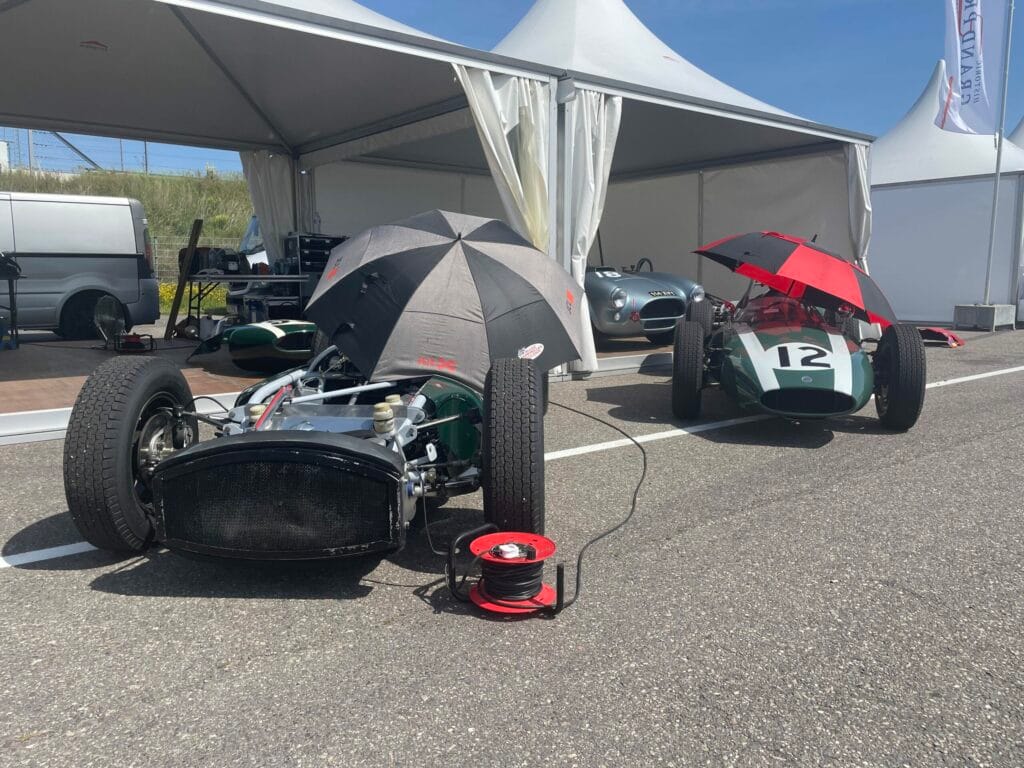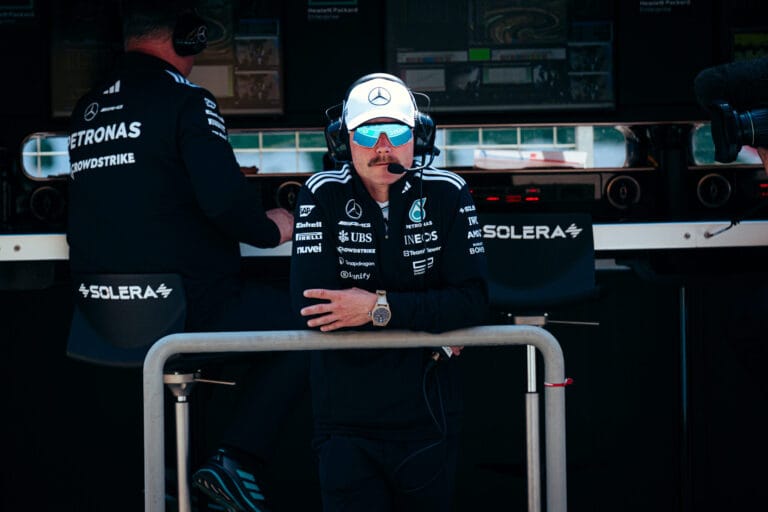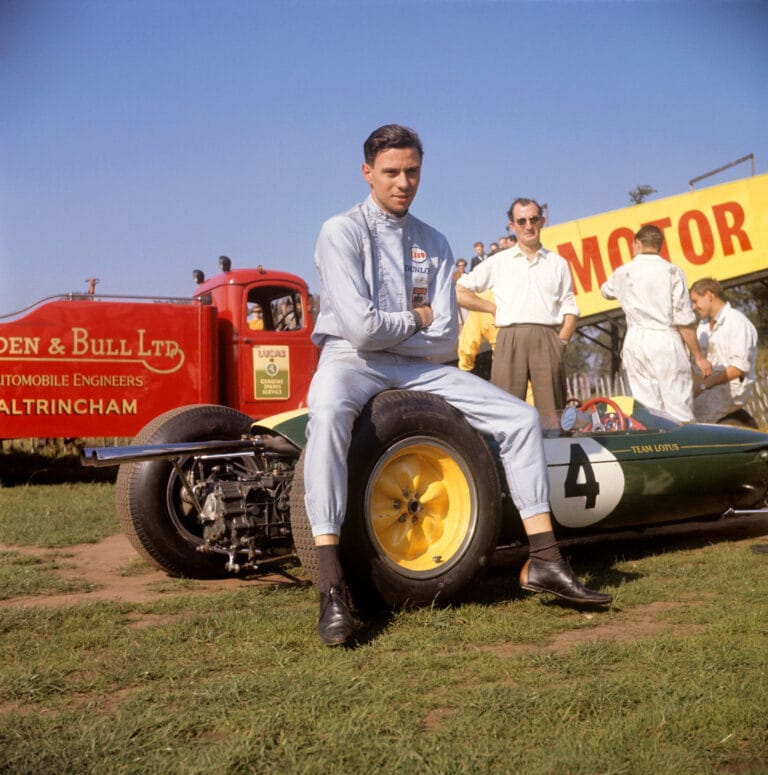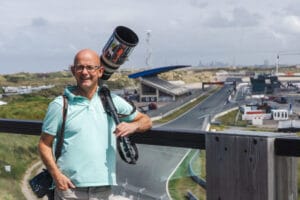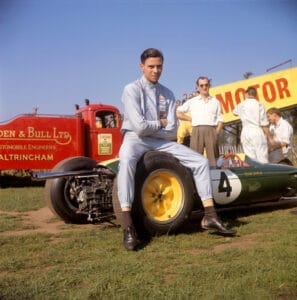The checkered flag has fallen on the thirteenth Historic Grand Prix Zandvoort. The three-day event has stayed true to its tried-and-tested formula: visitors have been immersed in the rich history of motorsport, while drivers have made the asphalt rumble under the deafening roar of revving engines.
The sun is mercilessly burning in the sky over Zandvoort. People are throwing themselves into the sea for a refreshing dip, but the town is also being swept up by the spectacle of the thirteenth edition of the Historic Grand Prix Zandvoort. “I expect about 15,000 visitors spread over the weekend,” predicts Erik Weijers, Chief Sporting Officer of Circuit Zandvoort, on the first day of the event. “That’s slightly less than last year, probably due to the cancelled train service to Zandvoort, the beach weather, and the highway closures due to the NATO summit and the Op de Ring festival.”
The engine hoods remain hermetically sealed at the Zandvoort Grand Prix, but during this three-day event, visitors can see and ask everything. In the pits, where strict access rules normally apply, they stroll among the drivers and mechanics. These do not let themselves be disturbed when they are photographed from less than a meter away while they tinker with the cars or scrape used tires.
Of course, there is also racing. The Masters Racing Legends for 1966/1985 F1 cars is always a staple, but as Weijers shares: “For the first time in a few years, the Formula 3 Classic Interseries and the Historic Formula 3 – 1000cc are back on the program. We have a limited number of available slots, so we have to juggle a bit. But essentially, little has changed: it remains a wonderful program with a huge variety of cars.”
Luck
While visitors are drawn to the sound of the rumbling engine of a Maserati, they also stumble upon the Lotus 21. This is unmistakable due to the long ‘nose’, with the start number 99 prominently displayed on top and the name Jim Clark engraved in yellow letters in the cockpit. Mark Shaw, a Scot – unsurprisingly – falls for the car as soon as he comes across it. “I was lucky because I was in the right place at the right time. The car was for sale and it was clear: it had to be mine. Jim Clark is the greatest Scottish driver of all time.”
Shaw’s Experience at the Historic Grand Prix Zandvoort
For Shaw, this is not his first participation in the Historic Grand Prix Zandvoort. He appears relaxed, with a team of mechanics by his side and a large fan in front of his Lotus to keep things cool. “I’ve won here a few times and stood on the podium,” he says. “It’s a fantastic circuit, with the charm of an old track and plenty of bends. Some cars have more power than this one, so the more bends, the better,” believes Shaw, who also has a favorite. “The bend at the top of the hill, after Slotemaker. It’s a fast, blind right turn downhill,” continues Shaw, “where you can gain time if you nail it.”
Falling in Love at First Sight
Shaw participates with his Lotus in the Historic Grand Prix Cars (pre-1966) category. A little further on, in one of the pit boxes by the pit lane, stands another Lotus: the Lotus 69, to be precise. German driver Marc Sydow races it in the Derek Bell Trophy & Formula 2 Classic Interseries. “Together with a friend, I drove in my Austin Mini Cooper S, which is over there,” says Sydow, pointing to the light blue car with which he will take to the track for the first time on Saturday in the Masters Gentlemen Drivers & Pre-66 Touring Cars category. “We were driving somewhere near Dortmund when he said, ‘We’re going there, there, and there to look at some cars.’ Then I saw this Lotus 69, a real screamer, and I fell in love instantly.”
Adapting to the Car
The necessary adjustments are then made by his mechanics, as Sydow is – as he puts it – ‘a bit big’. Last year, he made his debut with the bright red car at the Historic Grand Prix Zandvoort. “During the qualification, a large hole appeared in the car,” reveals Sydow, as he takes out his phone and shows a photo. The somewhat dry-looking, but unmistakably enthusiastic and pleasant Hanoverian is assisted in the pit box by his wife. She sees that he has no accident today: the former sim racer, who only switched to real racing a few years ago, even qualifies second in his class. “It’s a very fast circuit, which feels like music with perfect harmony. The Arie Luyendijk bend is a bit scary because you drive so close to the wall,” Sydow tells about one of his favorite bends, “but I also love this combination of bends,” he adds, pointing to the Hunserug.
Gerrit van Kouwen
The Lotus 21 and Lotus 69 are just a small part of the striking four-wheelers on display. From a row of Maseratis from the early years of Formula 1 and Le Mans prototypes to a car sponsored by the world’s most famous cabaret theater, Moulin Rouge: it’s a large open-air exhibition where the history of motorsport comes to life with loud engine roars. “I personally find the Ford Sierra RS500 Cosworth and Lola T644E, with which Gerrit van Kouwen (who passed away last year at the age of 60) became the first Dutchman ever to win the Formula Ford Festival, very special. It contains a lot of Dutch motorsport history and that appeals to me a lot,” continues Weijers, “but it all depends on where your own interest lies. There is something for everyone: from pre-war models to Formula GP cars that twenty-somethings still recognize from their youth. This creates a nice mix of visitors, with different generations coming together: grandparents with their children and grandchildren.”
Visitors marvel for hours at the cars from different construction years, some of which are restored specimens offered for sale. On a sand hill, a man quietly watches the drivers race through the Hugenholtz bend. Meanwhile, the Formula Student Team Delft answers questions about their ambitious project. Children are hoisted onto their parents’ shoulders, let off steam in the bouncy castle, and relax in the bean bags. A group of German friends enjoys a portion of nachos, accompanied by a refreshing brew. What also stands out is the Histokart stand.
Duty
Not all karts are created equal. On display are karts with fiberglass and leather seats. What they all have in common is their shine – they are, after all, owned by extremely passionate hobbyists – but they all meet the same requirement: “The standard is that the kart must be from 1984 at the latest. Internationally, that year has been set as the limit for the historical segment, because from 1985 onwards, karts were equipped with a plastic aerodynamic shell along the chassis,” explains Willem Koppendraier from Histokart. “I once bought a kart for 500 guilders at a garage in Den Helder and I’m still driving it after all these years.”
For the sixth year in a row, the association has sent a delegation to the Historic Grand Prix. Koppendraier has been a member since a few years after its founding in the seventies and, along with the approximately 60 members, cherishes the love for the old karting past. They traverse karting tracks all over the Netherlands, have recently made Spa-Francorchamps unsafe, and even in picturesque Jesolo, Italy, they’ve screeched their tires across the asphalt. However, the goal of today is not recruitment. “We consider it our duty to keep kart history alive,” Koppendraier makes clear. “Many drivers started with karting, it’s essentially Formula 1 on small wheels.”


